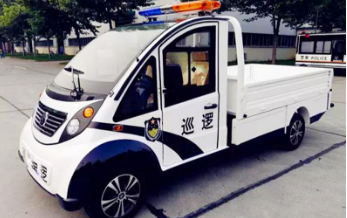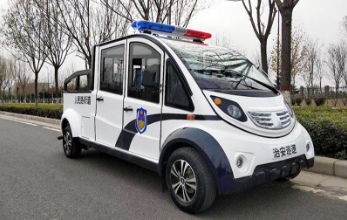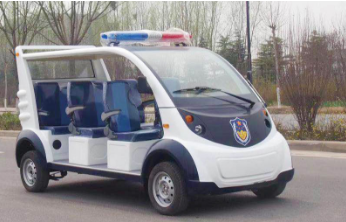中文 |
Most of the automotive body sheet metal parts are produced in batches, and the molding process is completed on mechanical equipment. Manual operations are mostly auxiliary processing, but single-piece processing or repair is mainly manual. The common hand-made craftsmanship of sheet metal is bending, edge-receiving, edge-laying, plucking, arching, seaming and correction, and the permanent connection between the sheet metal parts is achieved by welding and splicing.
[Type of damage to automotive sheet metal parts]
Car body sheet metal parts can be damaged during the use of the vehicle. Common ones are: wear, corrosion, breakage, bumps or tears on the surface of the metal sheet, wrinkles, bends and twists. The damages that belong to the vehicle application process include: wear, corrosion, cracks, etc.; mechanical damage: irregularities, tears, wrinkles, bends and twists caused by accidents; sometimes due to design reasons, such as structural strength Not enough, the process design is not reasonable, it will also cause damage to the sheet metal parts.
When an automobile sheet metal member is damaged, there is often more than one type of damage. Therefore, when repairing, it should be observed and analyzed. Different repair methods and sequences are used for different damage situations to obtain satisfactory results.

[Repair of wrinkles and bumps]
Wrinkles and irregularities caused by impact or extrusion of external force, such as light damage, metal does not extend, is elastic deformation. Heavier, the metal will expand and be plastically deformed. When the impact or extrusion is particularly severe, tearing occurs. Wrinkles and unevenness may occur in the exposed parts of the body sheet metal parts.
Convex trimming:
For the correction of the convex surface with large curvature, for the concave and convex damage, it can be repaired by hammering or top pulling. For less bumpy damage, place the horn on the back of the lower part of the recess, tap it with a hammer, and change the horn position accordingly.
When the bulge is substantially flattened, the recessed portion will largely recover due to the reaction force of the horn. Then observe the overall smoothness of the board surface, and do some minor trimming in a targeted manner to repair the bump damage.
Larger depression:
The pad can be padded on the back of the recess and lifted directly with the struts.
To reduce the jacking force, the recess can be heated to a dark red color if necessary. Rejuvenation should be considered when ejecting, which can make it "overkill". If the surface has large ductile protrusions, the metal at the extension can be properly shrunk. If the damaged part is difficult to put into the horn, it can be drilled in the concave part, the number of holes is as small as possible, the hole diameter is as small as possible, and then the wire is folded into a hook shape, fastened from the hole, and then stretched by external force. When required, extract the wire, weld the hole, and smooth it.

Wrinkle damage repair
For pleated damage, an external force (opposite to the direction of the impact force) can be applied to the pleats to transform the pleats into concavo-convex lesions. It is then repaired using the embossed damage repair method. The repair tool can be used with a manual hoist, one end fixed on the pleats of the sheet metal part, one end fixed on the sturdy column and wall, and the guide chain is tightened, and the pleats are gradually unfolded, and the degree of stretching should be observed at any time to avoid tearing.
[Bending and twisting repair]
There are many reasons for bending and twisting caused by impact or extrusion of external force. Common causes are injuries caused by accidents. In general, the bending and twisting deformation near the center of the impact or extrusion is severe and easy to find. The slight deformation depends on the inspection tool and the design size data to determine the degree of deformation. Sometimes it can be judged by observing the relative position of the boundary of the element.
The deformation of the body frame, beam and column can be corrected by the tensioning method, and the direction of the pulling force should be opposite to the direction of the deformation force. If the right front corner of the roof is collapsed after impact, the right front frame and the right front corner of the wind window frame are deformed, and the door cannot be closed. The focus of the frame deformation is at the upper right corner of the door frame. Use the top of the top to lie between the upper right corner and the lower left corner of the door frame, and rotate the handle to extend the screw at both ends. As the screw of the stabilizer is extended, the upper right corner of the roof gradually rises, the windshield frame is correspondingly reset, and the door frame can be gradually restored. Another example is the impact on the left side of the car, causing the middle column between the two left doors to be concave. At this time, a manual hoist can be used. One end is fixed at the damaged portion of the center column, and the other end is fixed on the solid column and wall to pull the guide chain. The iron chain is shortened and the central column depression will gradually reset.
When the body frame, beam and column are corrected by the tensioning method, the pad should be placed at the contact between the body sheet metal part and the tensioning tool to avoid new damage.

[Repair of tears]
The tear caused by the impact and extrusion of external force is accompanied by the extension of the dip, and the loss of some of the dips, commonly known as "lack of meat."
If the damage is lighter, the tearing part should be repaired smoothly, and then welded. If the condition is good, use CO2 gas to protect the welding, the welding joint should be flattened, and then measure whether there is ductile protrusion. If necessary, use the concave and convex damage repair method. repair. Those who are heavier in injury and “lack of meat” should consider digging up or replacing new ones depending on their degree and shape.
If you need to dig up, you should dig the "missing meat" as much as possible into a simple geometric shape, and then measure the size of the cavity, and fill it with the same material and thickness of the original material. When the material is unloaded, there is generally no weld joint of not more than 1mm. It is easy to use CO2 gas shielded welding, which can reduce deformation of the workpiece after welding and has strong anti-rust ability. In addition, because the welding wire has low hydrogen content, its crack resistance is good, and the structural strength after welding is high.
 Jiangsu Guangjie New Energy Technology Co., Ltd.
Jiangsu Guangjie New Energy Technology Co., Ltd.
 Add:Entrepreneurship Road,Genggeng industrial Park,Baoying County,Jiangsu Province,
Add:Entrepreneurship Road,Genggeng industrial Park,Baoying County,Jiangsu Province,
China
 Tel:+86 514 88310828
Tel:+86 514 88310828
Http:en.jsguangjie.com

Sweep and pay attention to us